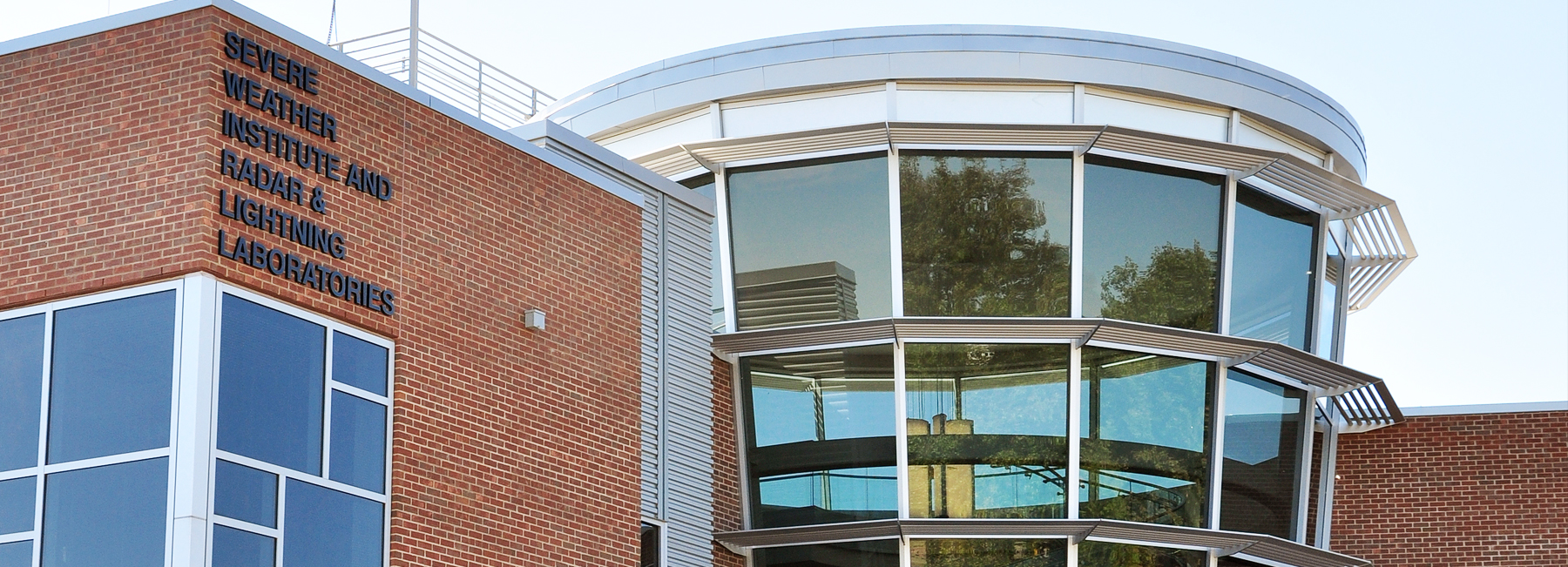The SWIRLL building provides an ideal infrastructure for fabrication, testing, and maintenance of the mobile platform vehicles and instruments. It also serves as an ideal infrastructure for education and outreach activities. The SWIRLL includes 5 high bays (3 of which are serviced by a 5-ton hoist), shop facilities, electronics and sounding labs, roof-top platforms for instrument testing, offices, a classroom, and a large operations center. A 60-ft long berm and adjacent chain link fence enclosure just south of the building provide an ideal setting for real-time (but not necessarily 24/7) MIPS and in situ measurements that are displayed on a web page here, and instrument evaluation.
More information about SWIRLL is below, but a more complete SWIRLL website can be accessed here.
Labs
SWIRLL offers several labs that are dedicated to development and maintenance of weather instrumentation and computers, as well as storing, prepping, and launching of radiosonde soundings used for atmospheric studies. There are three main labs inside SWIRLL. The electronics and radar lab is used for the storage, fabrication, and maintenance of electrical components, instruments, and computers. This lab features a soldering station, a radio frequency (RF) testing station, and also serves as a storage area for various electrical equipment used.
The lightning lab holds several computers, a soldering station, and an electrical and RF testing station. Inside the lightning lab, instruments are designed and built to study all aspects of lightning. Many of the lightning sensors used to measure lightning characteristic during the RELAMPAGO field campaign in Argentina were built right within this lab and deployed by UAH staff and students.
The Sounding lab, or Sounding Prep Room, is used to store and prep radiosonde soundings launched by the departmental club, UPSTORM, and faculty and staff. This space allows students to be trained to launch radiosondes in support of the many research operations that go on at SWIRLL. With the use of this lab, students who are interested in working at The National Weather Service (NWS) gain early experience launching radiosondes as many of the NWS offices launch upper air soundings twice a day for observation of the upper atmosphere. A station on the other side of the room is used by the Atmospheric Chemistry group to prep and launch Ozone soundings. These soundings are funded by NOAA and launched with an instrument pack designed to study the ozone in the Stratosphere. When it is not being used as a space for soundings to be prepped, this lab is used as an additional workspace for students to collaborate and conduct research projects.
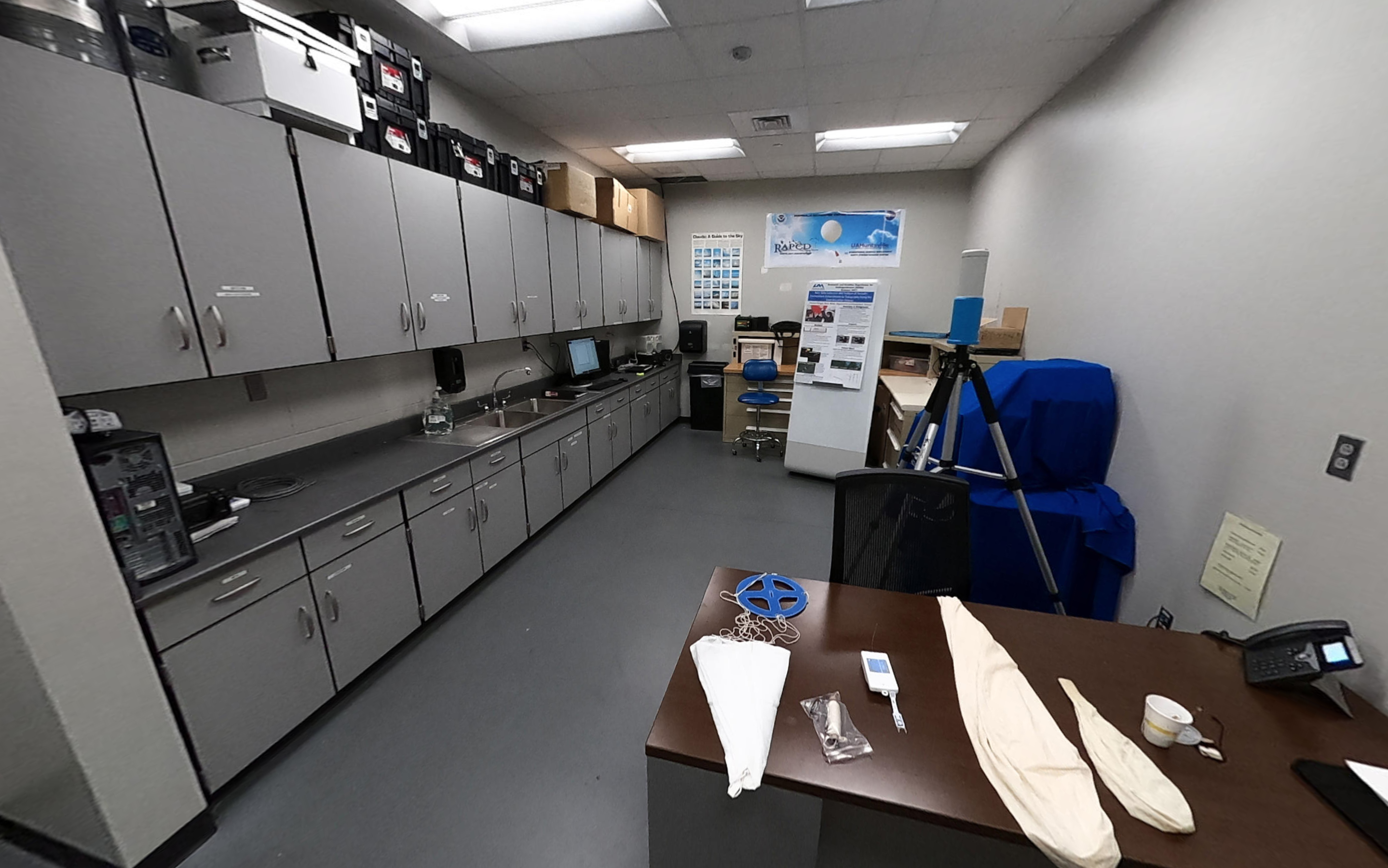
The SWIRLL Sounding Prep Room |
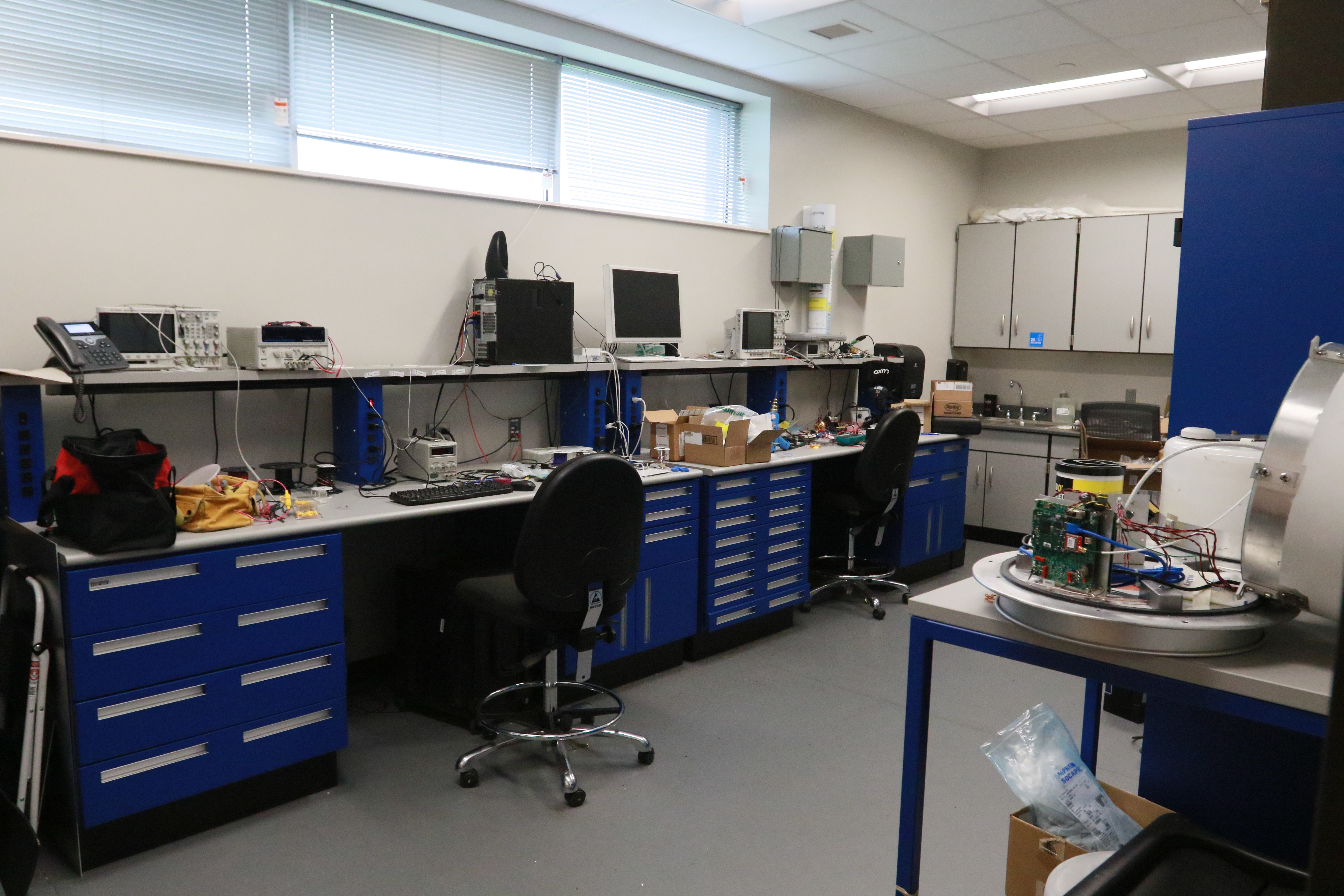
The SWIRLL Lightning Lab |
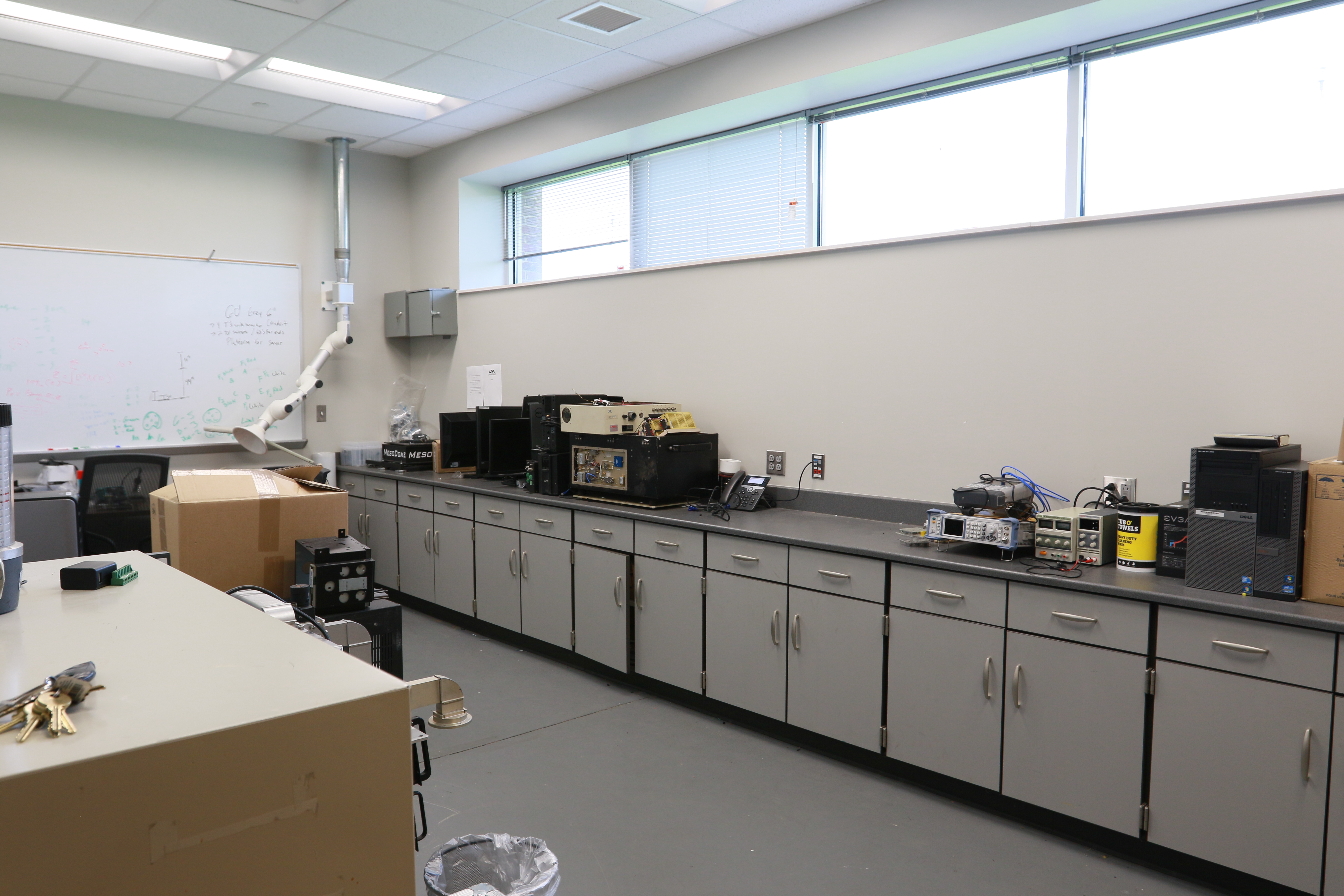
The SWIRLL Radar & Electronics Lab |
Research Operations Center
Located on the second floor of SWIRLL, the research operations center, or ROC, provides a large conference room-style space for multi-purpose use. The main purpose of this room is to serve as a command center for in-field operations that take place out of SWIRLL. In the Southwest corner of the ROC, there are two walls of hurricane windows suited for winds up to 250 MPH that allow for a panoramic view of the Southwest sky, including a glimpse of the iconic Apollo rocket located at the U.S Space and Rocket Center. Within this room, there are 4 Windows, 2 Linux, and 2 MacOS machines all connected to a 9-panel TV wall centered in the front of the room. These screens can be used to display each of these computers for in-field situational awareness or can be used as one large display. There also features a communications radio that can be used to communicate to teams when in the field. When it is not being used to monitor teams deployed in the field, the ROC serves not only as a large conference room for the research groups at SWIRLL, but also as a space for students to conduct various research projects and activities.
With access to most of these computers, students get experience and exposure to several operating systems that can be used for research. On the Windows computers, students can use GR2Level Analysist for radar analysis and access to ArcMap and ArcGIS. On the Linux machines, students have access to many of the Linux-based servers that house our data, as well as provides them with access to Solo3 and RaDX tools for radar editing and manipulation. Two Baron Radar Service Windows computers are also in this room that are loaded up with their Lynx weather graphics center that can be used to make weather graphics for live TV. With the Lynx system, students are able to gain hands-on experience with creating graphics for TV and social media. One of these computers is also linked to our ARMOR Radar located at the Huntsville International Airport for real-time radar control from SWIRLL.
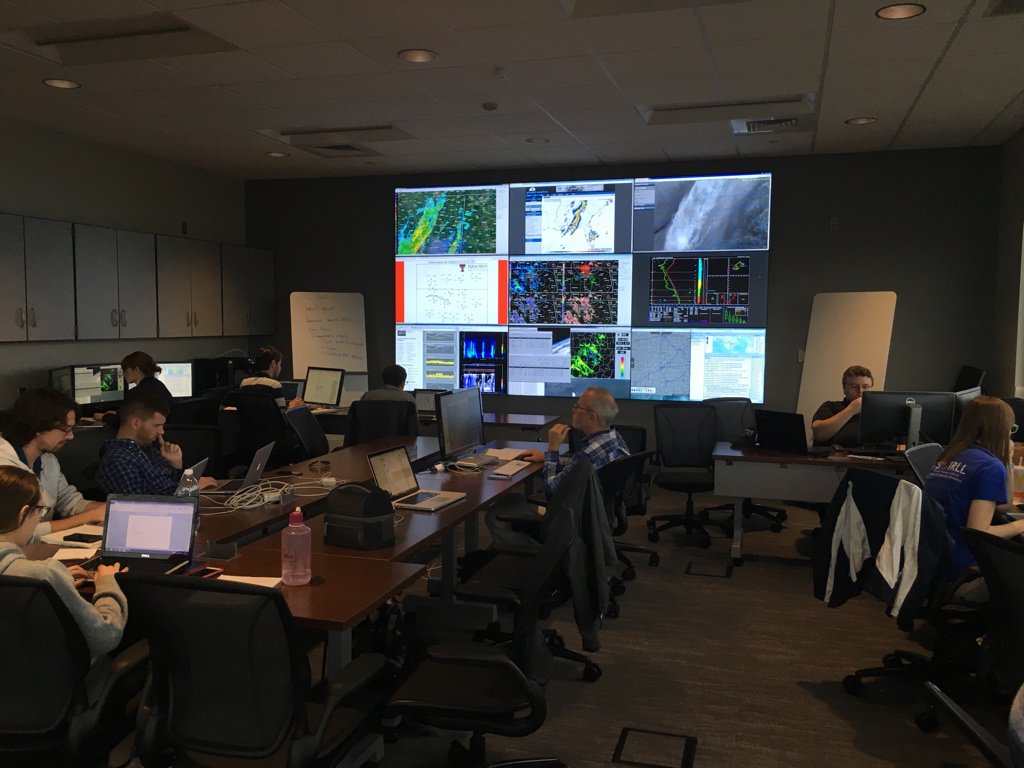
A packed house during a VORTEX-SE IOP. |
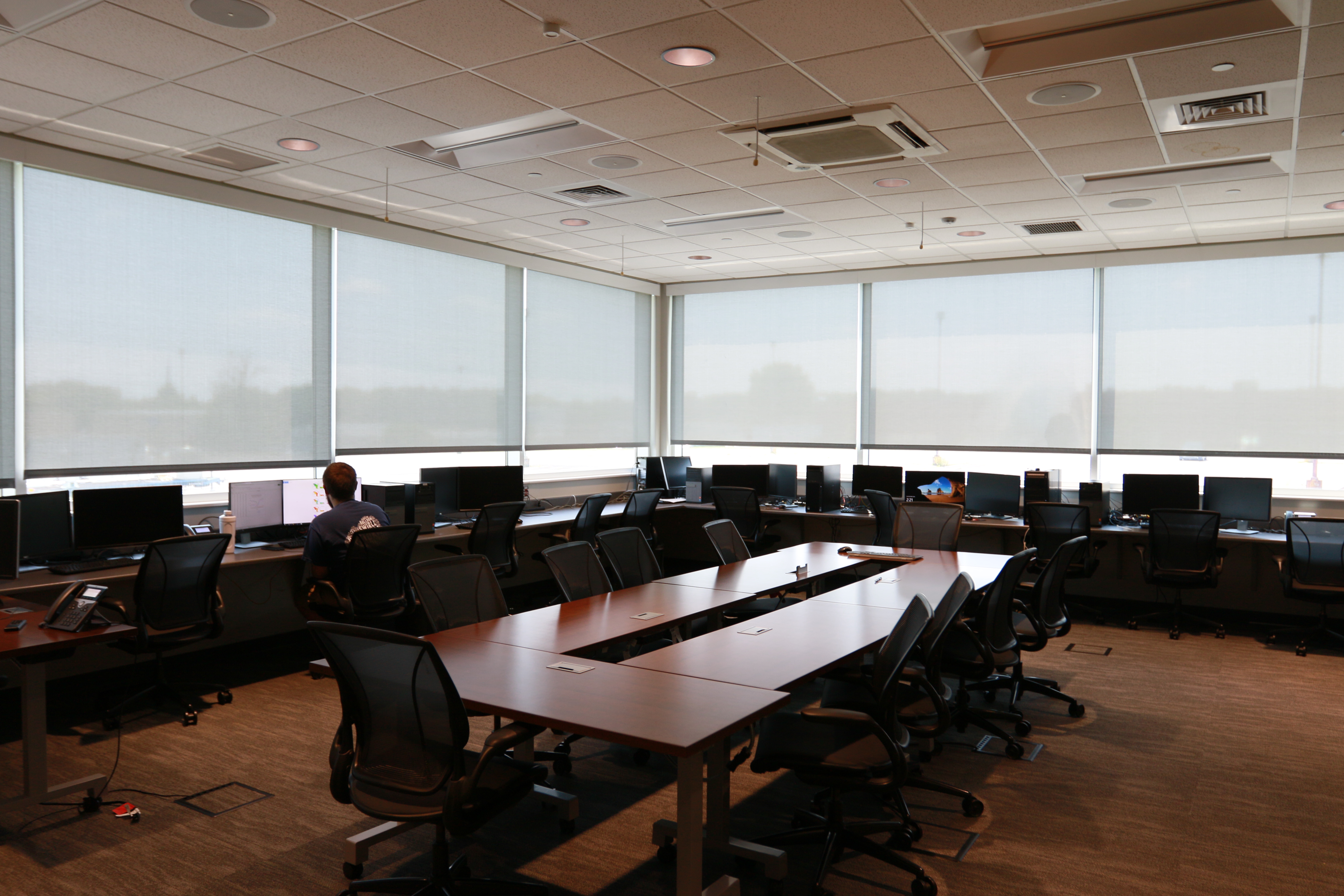
SWIRLL ROC serving as a student research center during the summer. |
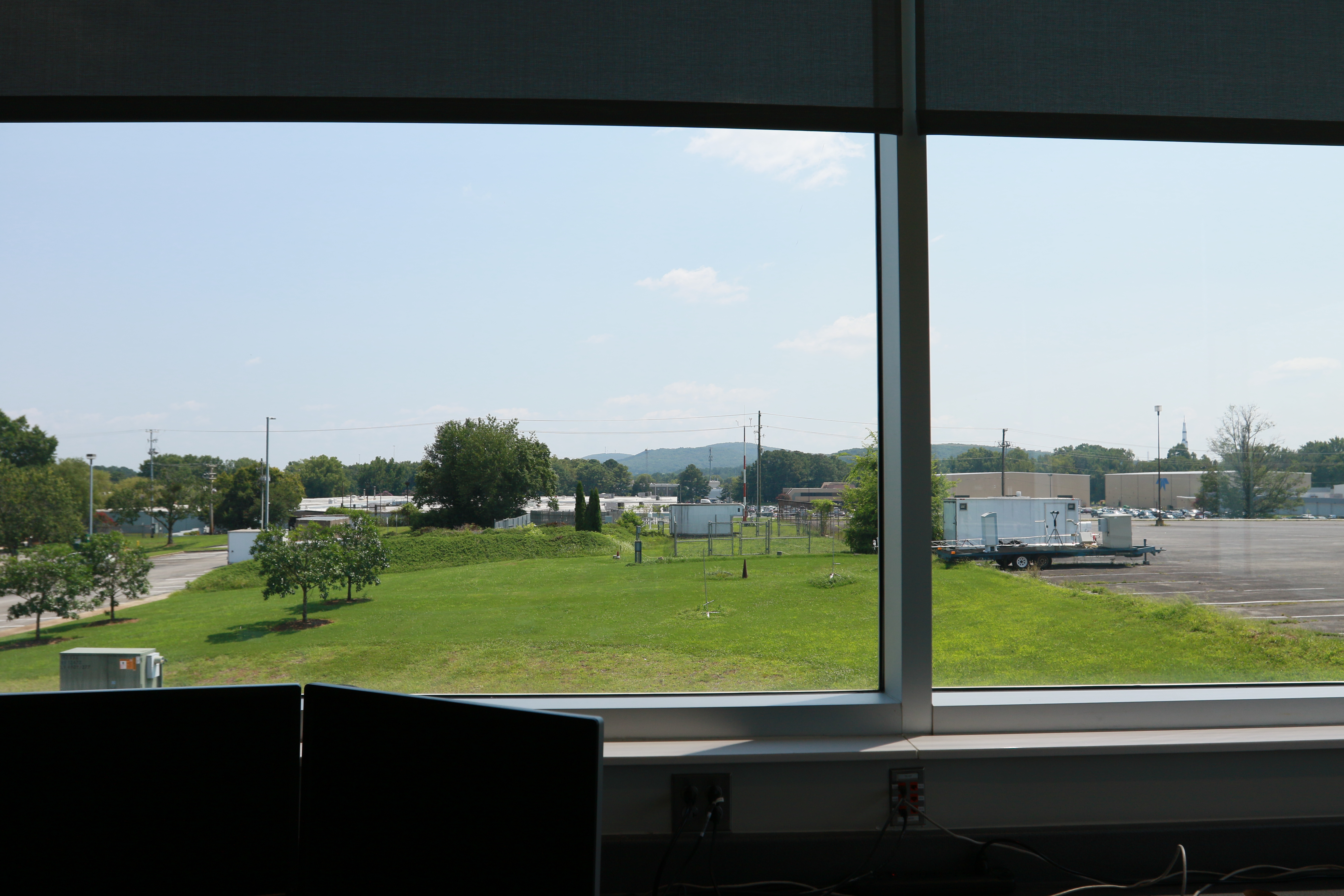
The view to the SW (including the Apollo rocket) out of the ROC windows. |
High Bay Garage
The SWIRL high bay garage is a large, 5-bay garage that provides space to store and conduct maintenance on the many SWIRLL research platforms. Centered over two of the bays, a 5-ton crane can be used to install or remove instruments and equipment on or off of the platforms. Located on the South end of the garage, space is available for balloons to be prepped and inflated for upper air soundings. A tall bay door on the South wall can be raised to launch these balloons. At the back of the garage, a storage room is used to store a variety of tools and equipment that is used to work on the platforms and instruments. A balcony overlooks the high bay that is used to quickly oversee work being done or for the many tours hosted at SWIRLL.
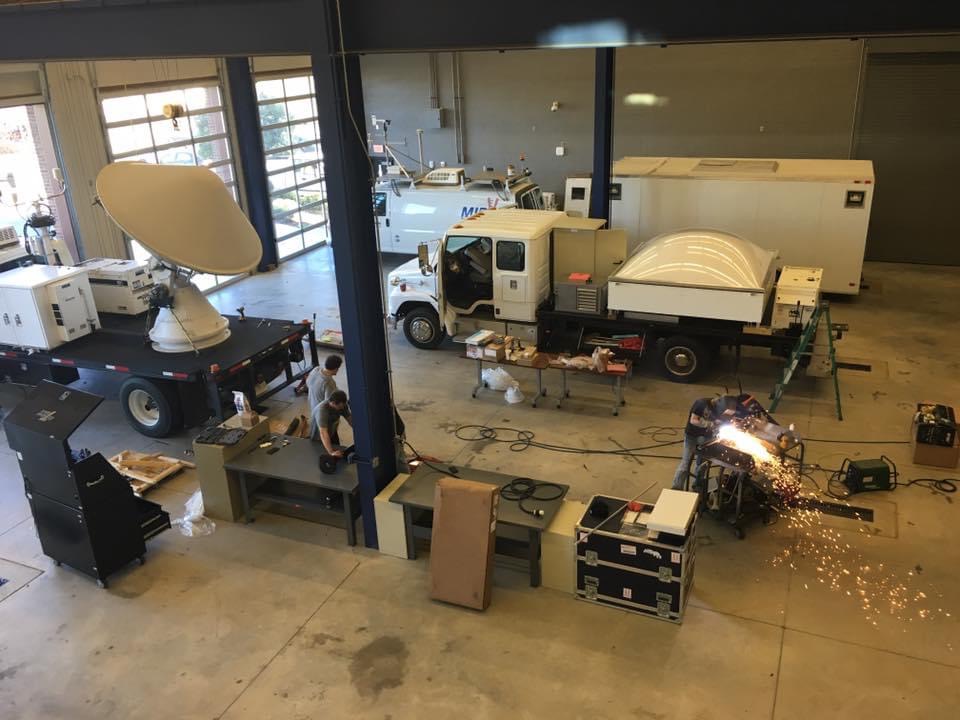
Staff and students working hard to get the RaDAPS platform operational. |
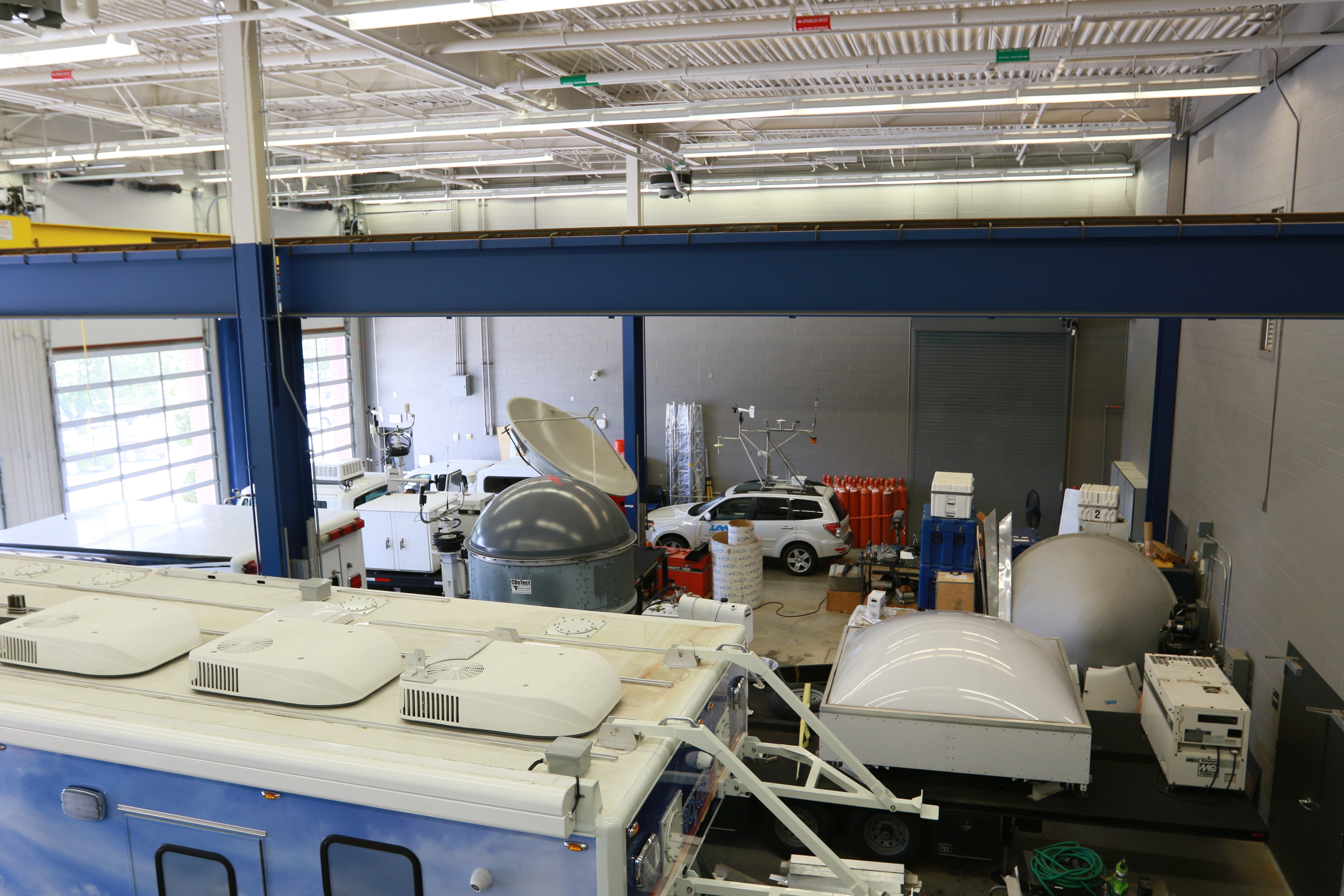
The SWIRLL platforms in the high bay for maintenance and storage. |
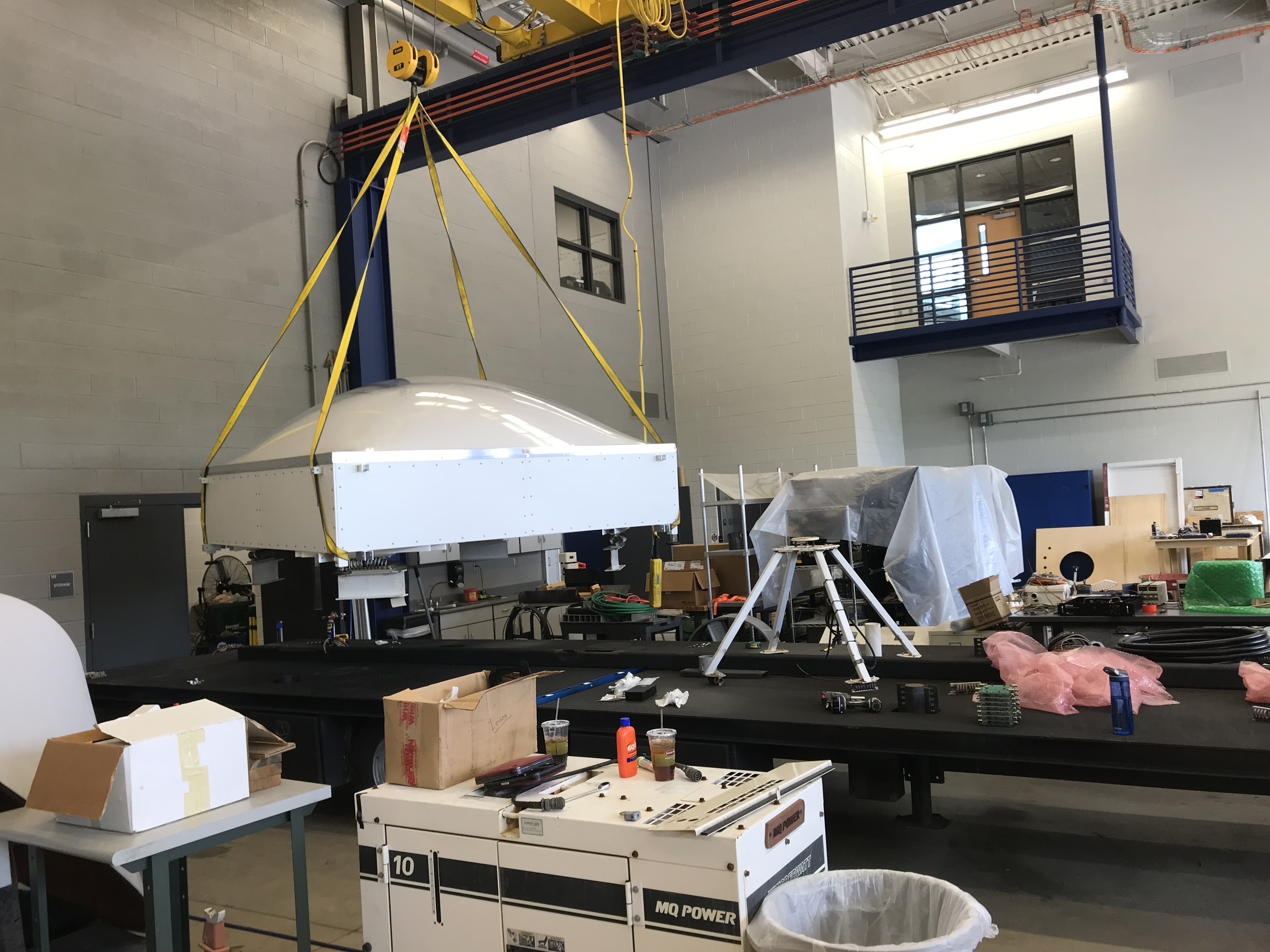
The new MIPS 915 MHz wind profiler being installed. |
SWIRLL Roof Platforms
On top floor of SWIRLL, the wall is lined with countertops designed to hold computers or to be used as workspace. Hurricane windows able to withstand up to 250 MPH winds are above these counters and provide a panoramic view of the Southwest sky. This floor also provides access to the roof. On the roof, four large platforms are mounted that can be used for instrument testing and calibration. There is also access to the second level and highest point of the roof that has antennas mounted for communication with radiosondes and the communications radio located in the ROC. A small crane is mounted here for heavier instruments to be lifted to this level of the roof. Our 360 deg panoramic camera is also located on this platform.

Roof platforms with lightning sensors mounted to them. |
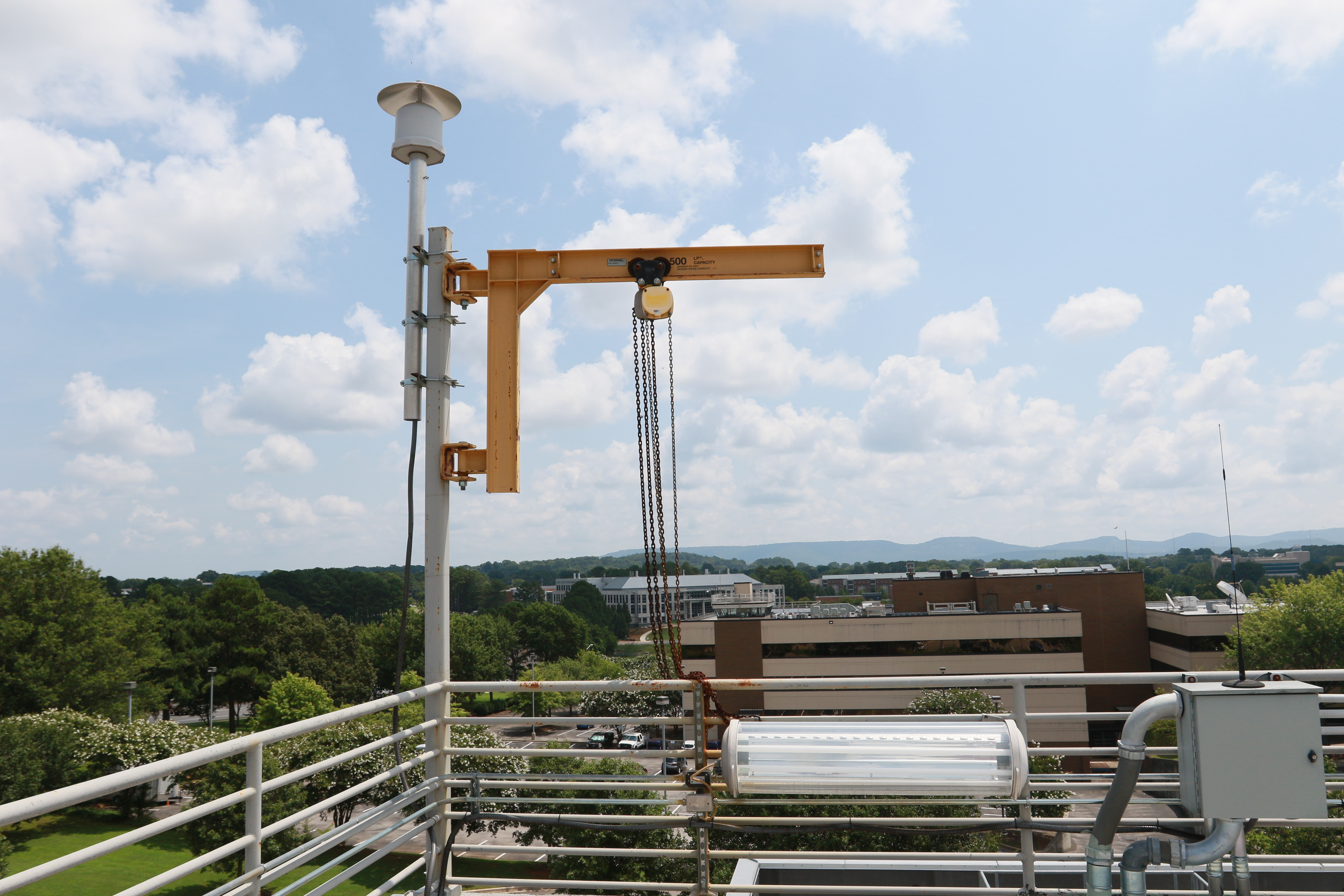
500 lb crane designed to lift light-load instruments to the roof. Mounted on top of this crane is the 360 degree panoramic camera. |
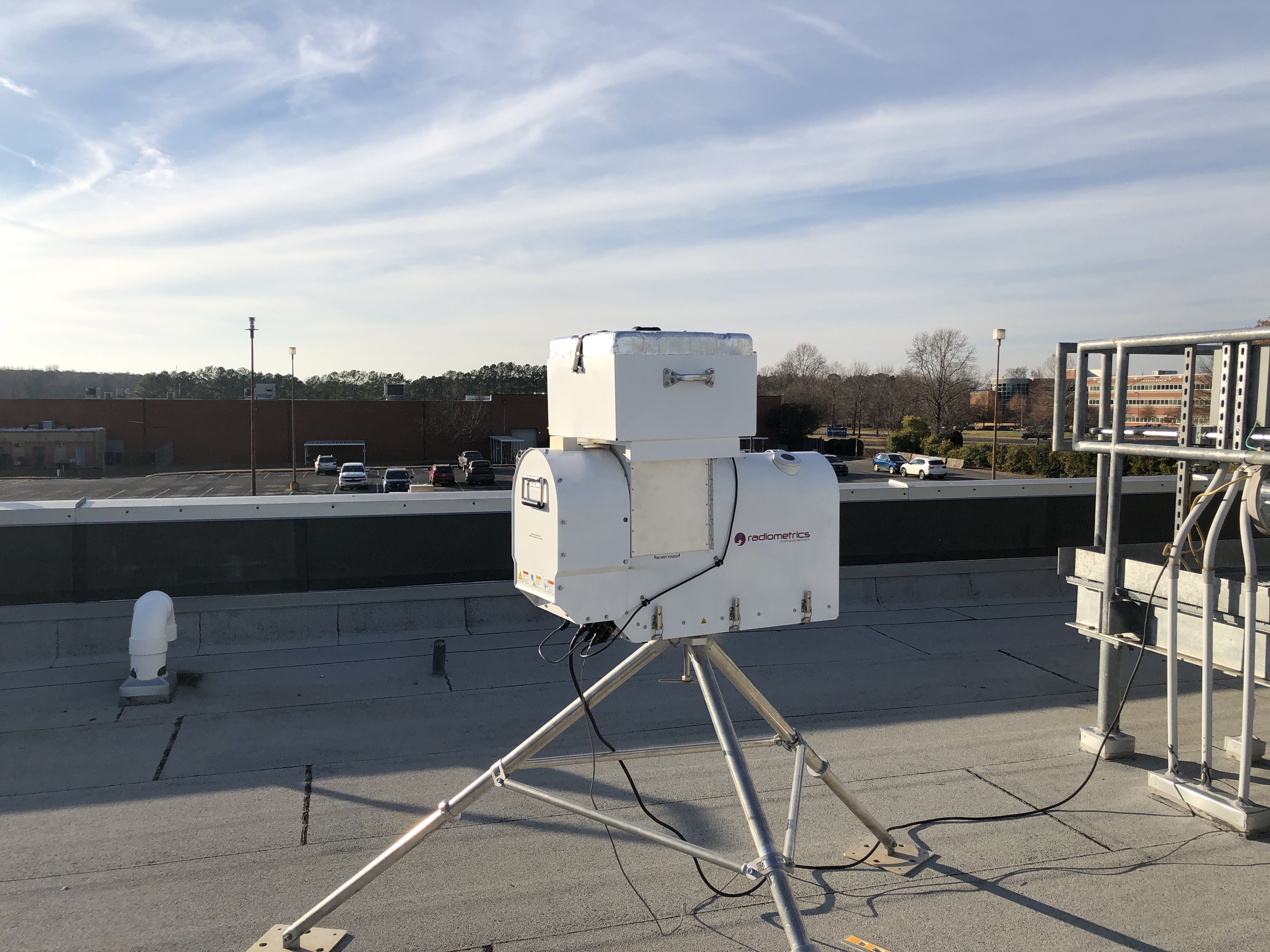
One of the SWIRLL radiometers preforming a liquid nitrogen calibration on the roof. |
Conference Room, Classroom, & Offices
A 20-student classroom is located on the first floor of SWIRLL that is used for several classes offered in the department. Linux machines connected to our data servers are accessible from each desk that gives students the ability to learn and gain hands-on experience with data in the classroom setting. A conference room is available on the second floor of SWIRLL for various meetings.
There are 7 faculty/staff offices located inside SWIRLL. Along the hallway of the second floor, there are 6 office spaces that are filled with graduate students conducting research around SWIRLL. These shared spaces allow for better student and faculty collaboration. Most graduate students working within these offices are provided a computer loaded with an operating system of their choice and multiple computer monitors. When running at full capacity, SWIRLL holds 12 graduate students and 7 faculty/staff members in these offices.
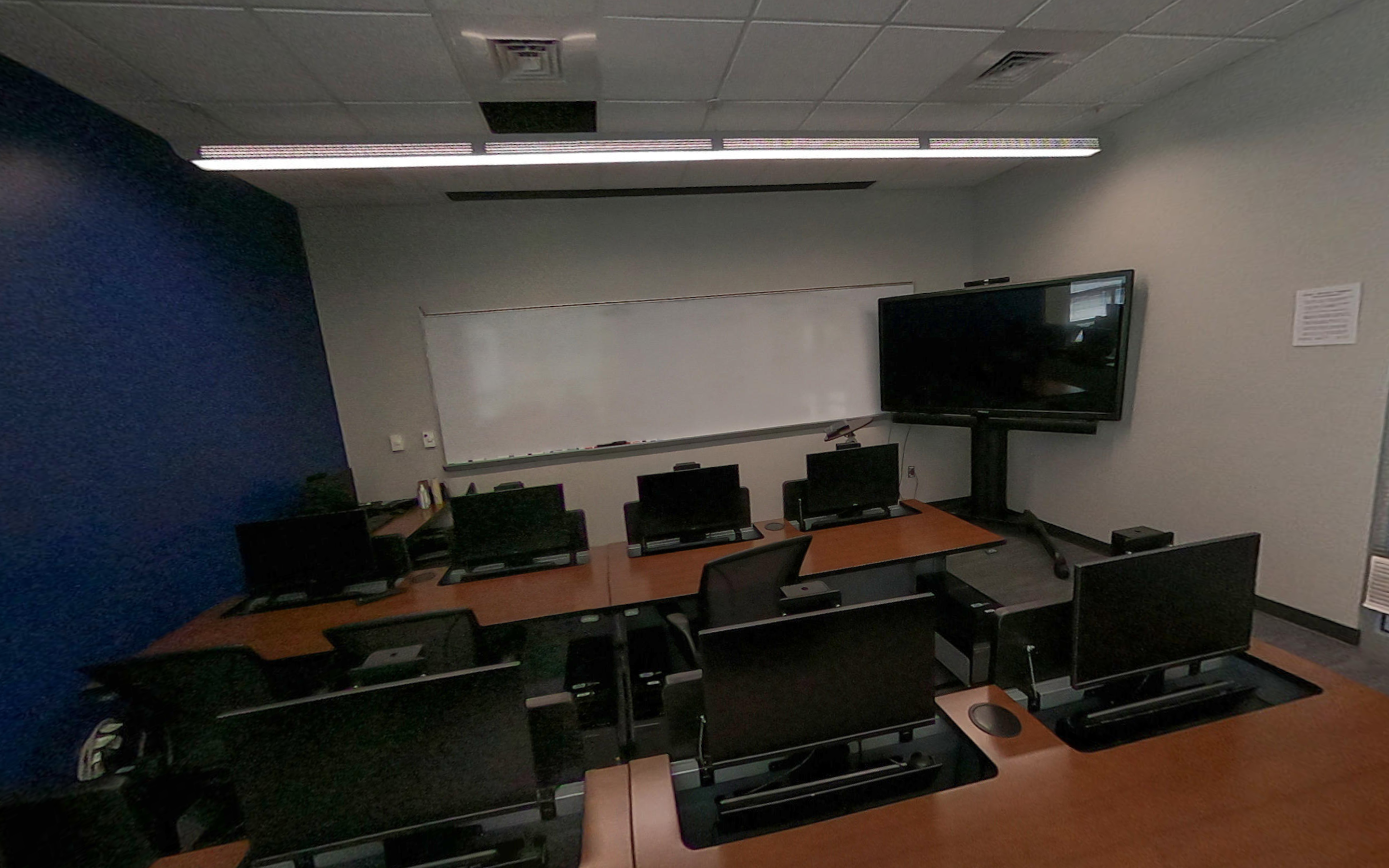
The SWIRLL classroom |
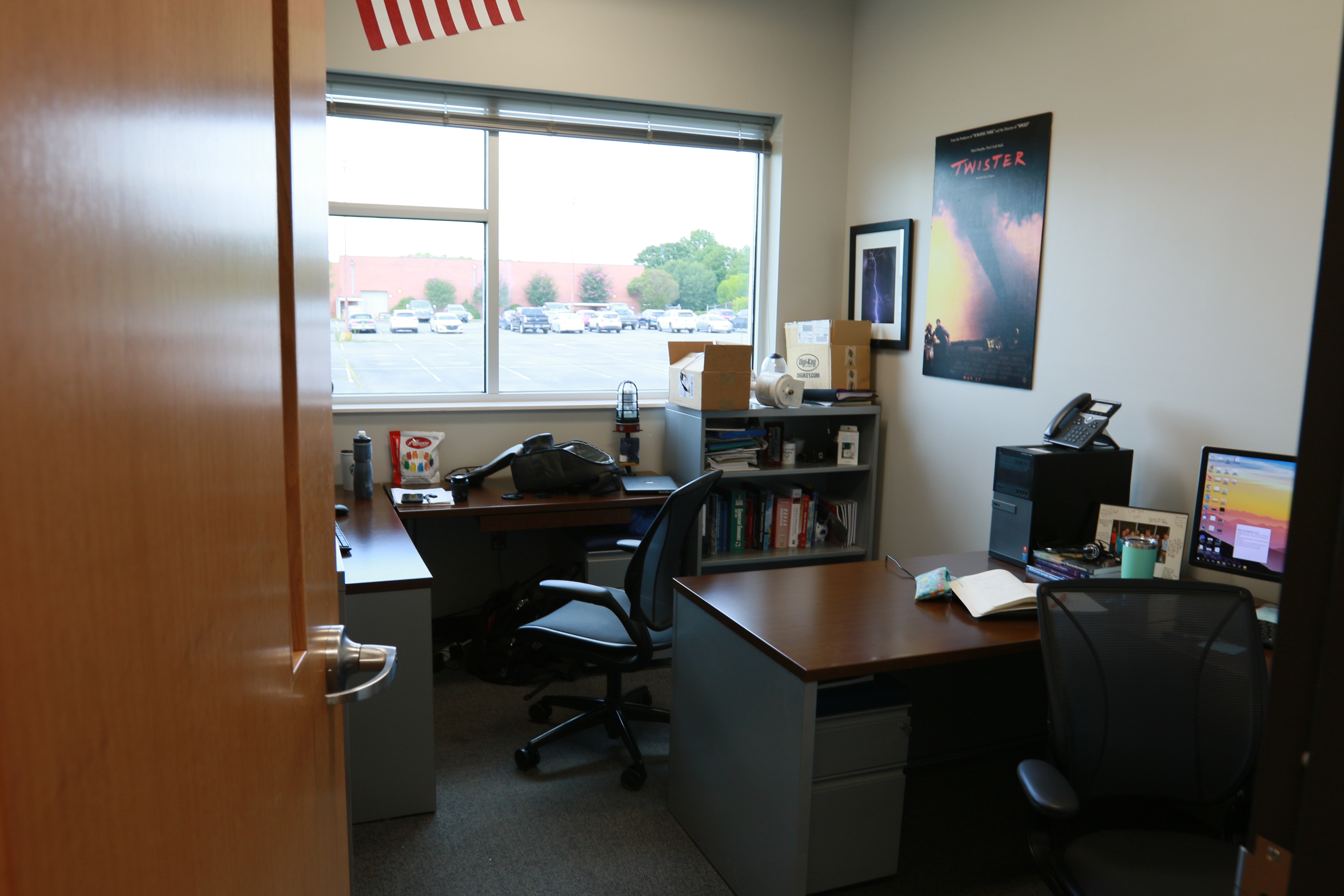
A view inside student offices. |
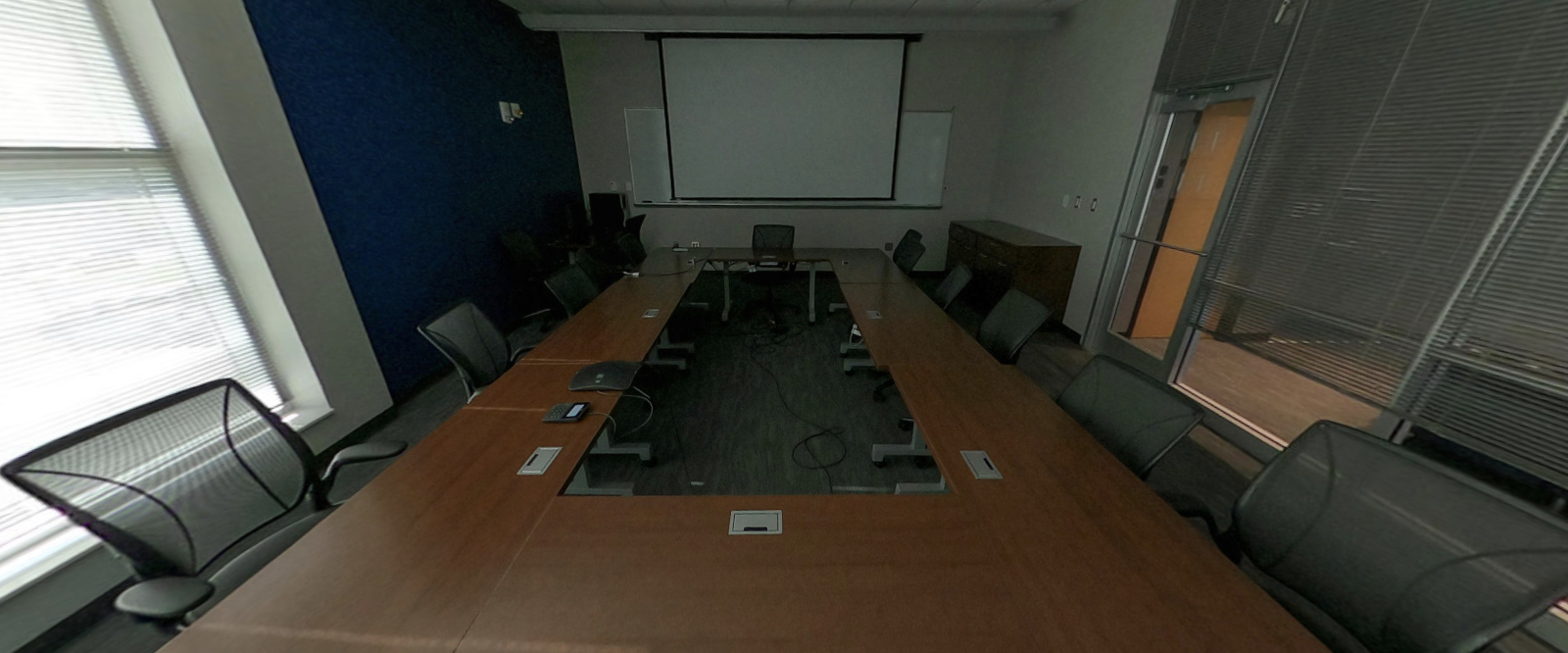
The SWIRLL Conference Room |

